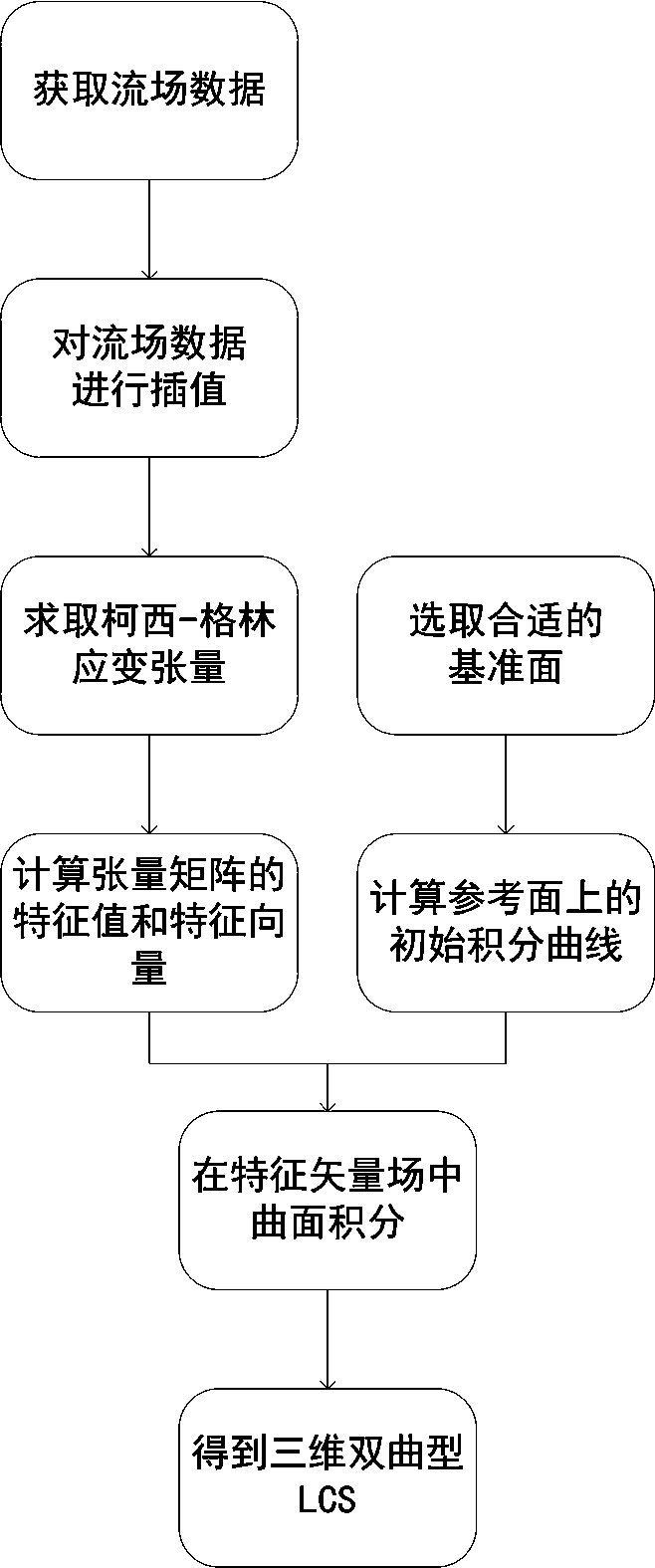Lagrangian quasi-order structure analysis method for 3D ocean currents
A technology for structural analysis and ocean currents, applied in instrumentation, computing, image data processing, etc., to solve problems such as limitations
- Summary
- Abstract
- Description
- Claims
- Application Information
AI Technical Summary
Problems solved by technology
Method used
Image
Examples
Embodiment Construction
[0010] 1. Initialize the grid and generate the Cauchy Green strain tensor for each grid point, and find the eigenvector corresponding to the largest eigenvalue of the tensor matrix.
[0011] Initialize three-dimensional grid points with equal intervals in the research space. In order to improve the calculation accuracy, six auxiliary points are initialized in the six directions of up and down, left and right, and front and back of each grid point. Note that the distance from the auxiliary point to the main grid point should be much smaller than the distance between the main grid points. Use cubic spline interpolation to obtain the speed of each node in the grid at different times, let the auxiliary points move in the flow field for a period of time, and perform space-time interpolation on the surrounding flow field to obtain the movement of the auxiliary points, and then obtain the main network Deformation gradient matrix around the grid. The gradient matrix is multiplied b...
PUM
 Login to View More
Login to View More Abstract
Description
Claims
Application Information
 Login to View More
Login to View More - R&D
- Intellectual Property
- Life Sciences
- Materials
- Tech Scout
- Unparalleled Data Quality
- Higher Quality Content
- 60% Fewer Hallucinations
Browse by: Latest US Patents, China's latest patents, Technical Efficacy Thesaurus, Application Domain, Technology Topic, Popular Technical Reports.
© 2025 PatSnap. All rights reserved.Legal|Privacy policy|Modern Slavery Act Transparency Statement|Sitemap|About US| Contact US: help@patsnap.com

